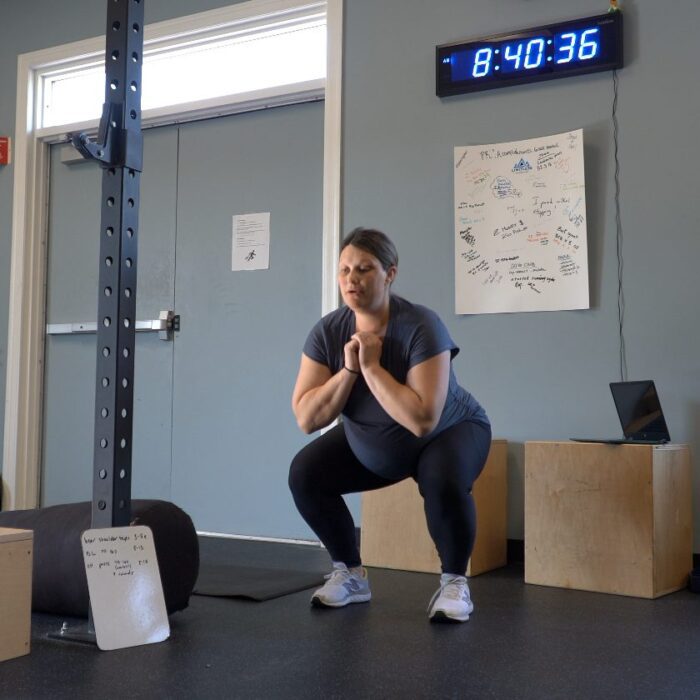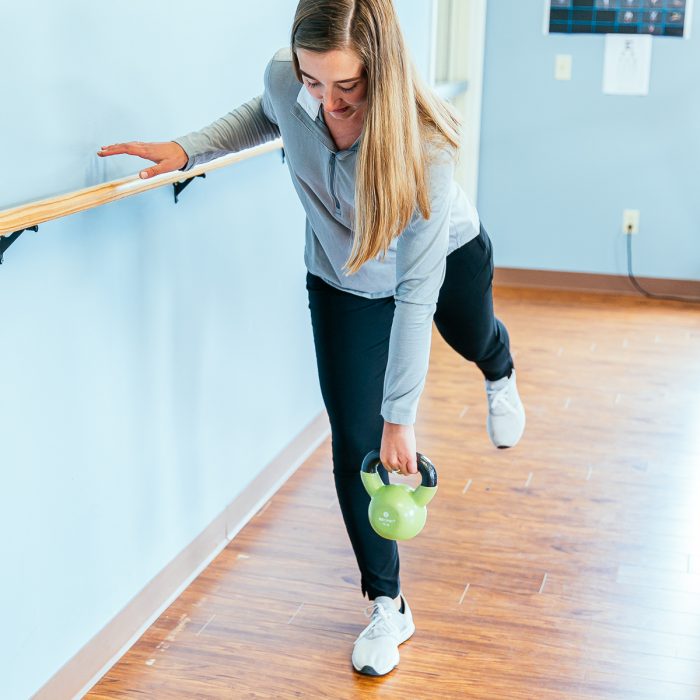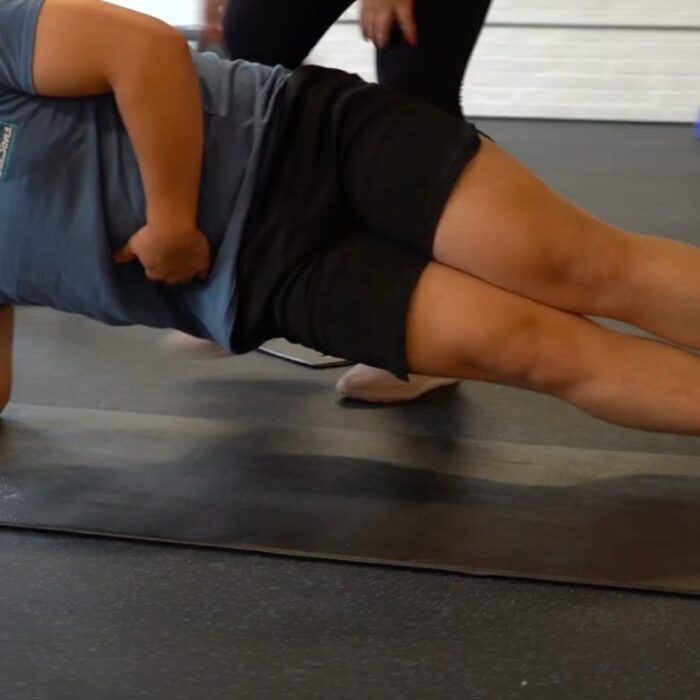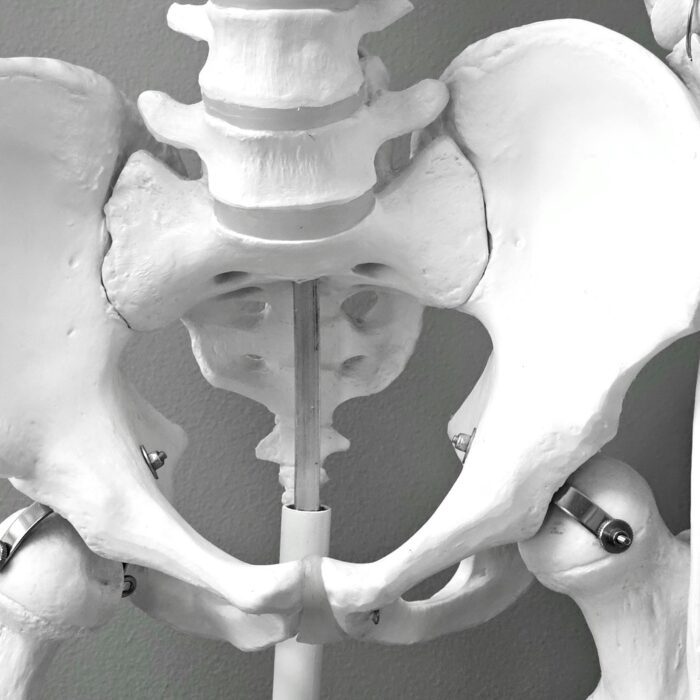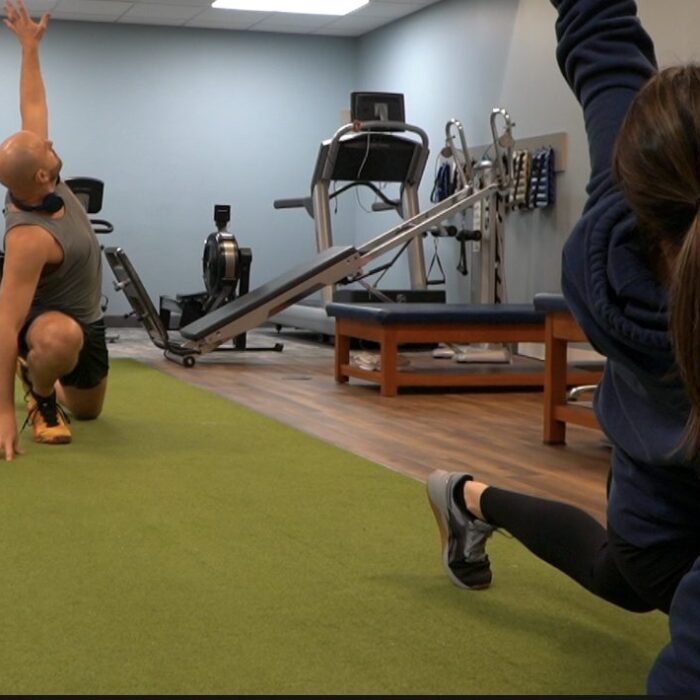Pelvic floor symptoms rarely start with a big dramatic moment. They creep in. A little leaking when you sneeze. A dull ache in the pelvis after standing all day. Pressure that you tell yourself is “probably normal after kids.” You change your routine, change what you wear, change where you go. What you don’t change is how alone you feel.
Then one night you type “pelvic floor physical therapy near me” and realize there is an entire field of care built for exactly what you’re dealing with.
How Common Are Pelvic Floor Disorders, Really?
The most recent large epidemiology studies and NIH data are very clear: pelvic floor disorders are common, not rare.
- National survey data (including NHANES) show that about 1 in 4 adult women in the U.S. live with at least one pelvic floor disorder such as urinary incontinence, pelvic organ prolapse, bowel dysfunction, or chronic pelvic pain (NIH and NHANES prevalence – see Sources).
- In a large primary care study of more than 25,000 women, about 32% had a diagnosis of a pelvic floor disorder based on ICD-10 codes. Bowel dysfunction was most common (around 25%), followed by urinary incontinence (~11%) and pelvic organ prolapse (~4%) (primary care cohort – see Sources).
- Prevalence increases with age. More than one-third of women over 40 report at least one pelvic floor disorder, and for women 80 and older, nearly half (about 49–53%) report symptoms like leaking, prolapse, or bowel control issues (aging and PFD studies – see Sources).
- These problems often overlap. Many women don’t have just one issue; an estimated 6–16% of symptomatic women live with two or more pelvic floor disorders at the same time (multi-disorder data – see Sources).
- Chronic pelvic pain alone affects roughly 15–20% of women in the general population and is linked to major quality-of-life impacts (chronic pelvic pain epidemiology – see Sources).
Pelvic floor dysfunction is common. Often silent, but common. And it’s not “just part of getting older” or something you’re supposed to live with.
The good news: major centers including Mayo Clinic, Cleveland Clinic, and Temple Health describe pelvic floor physical therapy as a first-line, evidence-backed treatment for many of these problems, often before surgery or long-term medication are even considered (Mayo Clinic, Cleveland Clinic, Temple Health – see Sources).
Limitless Physical Therapy Specialists runs dedicated pelvic health programs in Victor and Brighton, with pelvic care available through Greece as well. When you look for “pelvic floor physical therapy near me” in the Rochester area, accessible, specialized care may sit much closer than you think.
WHY “NEAR ME” MATTERS WHEN FINDING PELVIC FLOOR PHYSICAL THERAPY
Location sounds like a small detail until you try to fit pelvic floor care into a life that already feels maxed out.
If the nearest pelvic floor physical therapy clinic is forty-five minutes away, one appointment turns into an hour and a half in the car, rearranged childcare, time off work, and a long ride home when you’re sore or drained. Miss a week here and there, and progress slows way down.
Research on physical therapy outcomes shows that the more consistently people attend and follow their plan, the better they feel. That holds true in pelvic health as well (adherence studies – see Sources).
When pelvic floor physical therapy near you means a ten-minute drive instead of a slog across town, you actually go. You schedule follow-ups. You show up even on days you would have talked yourself out of a long commute. That steady rhythm is what retrains muscles, calms an irritated nervous system, and helps your brain trust your body again.
ACCESSIBILITY REDUCES BARRIERS TO CONSISTENT CARE
Pelvic health work is not “drop in once or twice and hope for the best.”
Most studies on pelvic floor muscle training and pelvic floor physical therapy describe:
- Early symptom shifts within about 4–6 weeks
- Larger changes usually showing up around 8–12 weeks
…depending on how long the problem has been around and how complex it is (postpartum PFPT trial, PFMT timelines – see Sources).
Those results are tied to consistency. Systematic reviews show that patients who attend the majority of their visits and complete home exercises most days of the week see better bladder control, less pelvic pain, and better quality of life than those with spotty attendance or low follow-through (adherence and outcomes research – see Sources).
When your pelvic floor physical therapy clinic is nearby, it’s much easier to build that kind of rhythm. You can:
- Book visits before or after work
- Duck in during lunch
- Stop by after school drop-off
…instead of planning your whole week around a long drive.
Limitless PT put pelvic health programs in Victor and Brighton for that reason. People who live, work, or move through Monroe County shouldn’t have to choose between getting help and keeping their life on track.
LOCAL SPECIALISTS UNDERSTAND YOUR COMMUNITY’S NEEDS
“Near me” is not only about mileage. It’s about context.
Pelvic floor physical therapists who work inside your healthcare community learn how local obstetricians manage birth injuries, how urogynecologists talk about prolapse and incontinence, and how urology practices handle post-prostate surgery rehab.
URMC and Rochester Regional Health both run comprehensive pelvic health and continence programs in this region (URMC pelvic health, Rochester Regional pelvic health – see Sources). A therapist who collaborates with those teams understands:
- Common surgical approaches used in local hospitals
- Post-op protocols your surgeon is likely following
- How to communicate efficiently with your providers
Limitless PT therapists in Victor and Brighton regularly coordinate with Rochester-area physicians, midwives, and surgeons. When your OB-GYN or urologist writes a prescription for pelvic floor physical therapy, there’s a good chance they’ve already seen patients go through these programs and know what kind of change to expect.
WHAT IS PELVIC FLOOR PHYSICAL THERAPY? (AND WHO NEEDS IT)
The pelvic floor is a group of muscles, ligaments, and connective tissues that support your bladder, uterus or prostate, and rectum. These muscles control urination, bowel movements, and play a role in sexual function.
Most of the time, they do their job quietly and you never think about them. Problems start when they:
- Stop coordinating well
- Lose strength and endurance
- Stay tense when they should relax
Pelvic floor physical therapy focuses on how those muscles work, not just where the pain or leaking shows up. Sometimes the issue is poor strength and endurance. Other times the muscles stay braced, which can cause pain, frequency, and difficulty emptying. Often, parts of the pelvic floor are weak while other parts are guarding.
That is why “just do Kegels” fails for so many people. If the muscles are already overactive, squeezing harder does not help. Mayo Clinic and Cleveland Clinic both highlight that pelvic floor physical therapy uses more than one tool:
- Education
- Targeted exercise
- Manual therapy
- Biofeedback
- Breathing and pressure management
- Posture and movement retraining
(Mayo pelvic floor PT overview, Cleveland pelvic health program – see Sources.)
COMMON CONDITIONS TREATED: INCONTINENCE, PAIN, AND PROLAPSE
Urinary incontinence is one of the most common reasons people search “pelvic floor physical therapy near me.” Large U.S. studies estimate that 17–56% of women report problems with urine leakage, with higher rates after childbirth and later in life (NIH PFD prevalence – see Sources). Fecal incontinence occurs less often, but still affects around 10% of adults in some groups.
Guidelines and reviews referenced by Mayo Clinic, Cleveland Clinic, and the American College of Physicians describe pelvic floor muscle training and pelvic floor physical therapy as first-line care for many forms of urinary incontinence and as a core part of conservative care for pelvic organ prolapse (ACP and urogynecology guidelines – see Sources).
Pelvic floor PT can help with:
- Stress leakage when you laugh, cough, sneeze, or exercise
- Urgency with strong, sudden urges and not enough time to reach the bathroom
- Mixed patterns where both stress and urgency show up
Pelvic pain is another major category. Mayo Clinic and NIH describe chronic pelvic pain as a condition where pain can linger long after tissues should have healed, often driven by a sensitive nervous system and overactive pelvic floor muscles (chronic pelvic pain and central sensitization – see Sources).
Examples include:
- Pain during intercourse
- Tailbone pain after a fall or childbirth
- Burning or pressure after pelvic surgery
- Ongoing pelvic aching that never fully settles
Pelvic organ prolapse, where one or more pelvic organs drop downward and cause pressure, heaviness, or a bulging sensation, also responds to pelvic floor work. PFPT cannot correct severe anatomical changes, but research shows it can ease symptoms, improve support, and sometimes delay or reduce the need for surgery (POP and PFMT evidence – see Sources).
YOU’RE NOT ALONE: 25% OF ADULTS EXPERIENCE PELVIC FLOOR DYSFUNCTION
Cross-sectional and cohort studies show that about 25% of adult women report at least one pelvic floor disorder, including urinary incontinence, prolapse, fecal incontinence, or pelvic pain (NIH epidemiology studies – see Sources).
Those numbers climb with:
- Age
- Number of vaginal births
- Certain surgeries and medical conditions
- Obesity and other lifestyle factors
Among women aged 80 and older, nearly half report some combination of leaking, prolapse, or bowel control problems. Some recent analyses put the prevalence of any pelvic floor disorder in this age group at around 49–53% (aging and PFD data – see Sources).
These issues often overlap:
- A significant subset of women with pelvic floor disorders have more than one condition at the same time, with estimates ranging from about 6.5% to 16% having two or more disorders (multi-disorder burden – see Sources).
Men face their own version of this. NIH-supported research on chronic prostatitis/chronic pelvic pain syndrome shows that many men have trouble relaxing their pelvic floor muscles and carry more tension at rest than people without pelvic pain. Pelvic floor physical therapy with biofeedback and relaxation training has been shown to help men reduce pain, urinary symptoms, and sexual dysfunction after prostate surgery or in chronic pelvic pain (male chronic pelvic pain research, Mayo pelvic floor dysfunction program – see Sources).
So if you’re the one quietly planning every drive around bathrooms, saying no to exercise classes, or dreading intimacy, you’re not the odd one out. You are part of a very large, very quiet group.
HOW TO FIND QUALIFIED PELVIC FLOOR PHYSICAL THERAPISTS NEAR YOU
Typing “pelvic floor physical therapy near me” into a search bar is only step one. The harder part is sorting out who truly specializes in this work and who just added “pelvic floor” to a long list of general services.
Pelvic floor therapy is not a core topic in most entry-level PT programs. Internal assessment and treatment of bladder, bowel, pain, and prolapse symptoms require extra education that many therapists never pursue.
You want someone who lives in this area of practice, not someone who sees one or two pelvic cases a month and spends most of their time on general orthopedics.
THE TRAINING GAP: WHY NOT ALL PTS ARE PELVIC HEALTH EXPERTS
The Academy of Pelvic Health Physical Therapy (a section of the American Physical Therapy Association) describes a structured pathway for advanced pelvic training. Their CAPP-Pelvic certificate requires licensed PTs or PTAs to:
- Complete multiple levels of pelvic health coursework
- Pass written and scenario exams
- Submit and pass a formal case reflection
(APTA pelvic health training – see Sources.)
On top of that, many pelvic health therapists pursue board certification in women’s health (WCS) or log thousands of hours treating pelvic cases under mentorship.
That type of training shows up in the room. A specialist notices subtle patterns in how you breathe, brace, and move. They know when weakness is the main issue, when muscle over-activity is in the way, and when pain is driven more by central sensitization than by tissue damage. They also know when to refer to urogynecology, urology, gastroenterology, or a pain program.
The pelvic health therapists at Limitless PT have gone through this kind of extended training. Pelvic work is not an afterthought inside a big open gym; it is a dedicated part of what these clinicians do every week.
5 QUESTIONS TO ASK BEFORE YOUR FIRST APPOINTMENT
To figure out whether a clinic you found under “pelvic floor physical therapy near me” truly specializes in pelvic health, you can ask a few direct questions when you call:
- What percentage of your caseload is pelvic health patients?
- What pelvic health–specific training or certification has my therapist completed?
- Do your evaluations include internal pelvic floor assessment when appropriate and with consent?
- What tools do you use besides Kegels and general exercise—manual therapy, biofeedback, breathing and pressure management, movement retraining?
- Will my sessions be one-on-one in a private room, or in an open area with other patients present?
Professional guidelines from APTA and organizations like Nova Scotia Physiotherapy state that internal assessment is standard for a full pelvic evaluation, as long as you consent, feel safe, and can stop at any time (pelvic internal exam guidelines – see Sources). If a clinic never performs internal work or treats you only with generic exercise sheets, they may be missing half the picture.
WHAT TO EXPECT DURING YOUR FIRST PELVIC FLOOR PT SESSION
Your Private, One-on-One Evaluation
Your first visit is usually 60–90 minutes and starts with conversation. You sit with your therapist in a private room and talk about your history: childbirth, surgeries, injuries, bowel or bladder habits, sexual function, exercise, and how long you’ve been dealing with your current symptoms.
This part is unhurried on purpose. Pelvic problems don’t happen in a vacuum, and your therapist needs the whole story, even the parts that feel awkward to share.
Next comes a physical assessment that looks at far more than the pelvis. Your therapist will often:
- Watch how you stand, walk, squat, and move
- Assess spine and hip mobility
- Check breathing mechanics and pressure control
Internal assessment comes only after you consent and understand why it is being offered. A gloved, lubricated finger is gently inserted vaginally or rectally to feel muscle tone, strength, endurance, coordination, and trigger points.
This is similar in setup to a gynecologic exam, but the focus is muscle function rather than reproductive organs (patient-facing pelvic PT explanations – see Sources). You stay in control; if you say “stop,” your therapist stops.
APTA guidelines emphasize informed consent, privacy, and clear documentation for internal work. No stirrups. No speculums. Just careful palpation, explanation, and ongoing check-ins about comfort (pelvic internal exam guidelines – see Sources).
TREATMENT TECHNIQUES: FROM MANUAL THERAPY TO BIOFEEDBACK
Treatment usually begins on day one, based on what your therapist finds.
If your pelvic floor is overactive and cannot relax, internal and external manual therapy are used to ease trigger points and release shortened muscle bands. Major centers such as Mayo and Cleveland highlight soft tissue work, joint mobilization, and related techniques as helpful parts of pelvic rehab when combined with exercise and education (manual therapy and pelvic rehab sources – see Sources).
If weakness and poor endurance drive your symptoms, you learn how to find, contract, and coordinate the pelvic floor and surrounding muscles. Many people discover they have been doing Kegels incorrectly—holding their breath, bearing down instead of lifting, or gripping their glutes and abs while the pelvic floor barely engages.
Biofeedback can help in both directions. Sensors measure pelvic floor activity and give you real-time feedback on a screen or through sound. Research shows:
- Strong benefit for bowel dysfunction and fecal incontinence
- Helpful support for some pelvic pain cases
- Mixed evidence for urinary incontinence, where pelvic floor muscle training alone already works very well
(biofeedback evidence – see Sources).
Between visits, you receive a home program. Studies on pelvic health outcomes keep coming back to the same point: people who attend sessions regularly and actually do their home exercises get better faster and stay better longer (adherence research – see Sources).
Most patients see change within four to six weeks of consistent pelvic floor physical therapy, with bigger gains often landing in the eight to twelve week range, especially for long-standing symptoms (PFPT timelines – see Sources). There’s no magic number, but there is a pattern: show up, practice, adjust, repeat.
WHY LIMITLESS PT’S PELVIC HEALTH SPECIALISTS STAND OUT
If you search “pelvic floor physical therapy near me” around Rochester, you’ll see programs through URMC, Rochester Regional Health, and several private practices. That’s a good thing; it means pelvic health is finally getting more attention.
Limitless PT sits inside that landscape as a practice where pelvic health is not a side note. At Victor and Brighton, pelvic floor care is part of the core identity of the clinic. Therapists spend a large part of their week with patients who leak, hurt, feel pressure, or struggle after childbirth or surgery.
That repetition matters. A therapist who has performed hundreds or thousands of pelvic evaluations sees patterns that textbooks barely mention. They notice when abdominal scars from a C-section are changing how forces move through the pelvis. They catch when chronic back pain and pelvic pain feed each other through the way your nervous system has learned to guard.
Research on chronic pelvic pain and central sensitization shows that pain can spread and intensify over time as the brain and spinal cord become more reactive. Effective treatment needs to address tissue health, movement, and the way your nervous system processes signals (central sensitization research – see Sources). That takes more than a generic handout.
Limitless PT builds plans that combine manual therapy, graded exposure to feared movements, breathing and pressure control, pain education, and nervous system-calming strategies in a way that matches what current research recommends.
SENSITIVE, CONFIDENTIAL CARE IN ROCHESTER-AREA LOCATIONS
Talking about bladder control, bowel habits, sexual pain, or prolapse can feel exposing. Doing that in an open gym with other patients nearby is even worse.
Pelvic health appointments at Limitless PT happen in private rooms, one-on-one. You are not sharing space with several other patients and a therapist who is bouncing between treatment tables. That setup also lines up with pelvic health guidelines that stress privacy and patient safety for internal work (pelvic internal exam guidelines – see Sources).
Victor: 6534 Anthony Drive Suite C – (585) 869-5140
Brighton: 2561 Lac DeVille Boulevard Suite 100 – (585) 473-1290
Both locations see men and women for pelvic floor physical therapy and work with a wide range of ages, from postpartum parents to older adults trying to avoid more surgery.
TAKE THE FIRST STEP: SCHEDULE YOUR PELVIC HEALTH CONSULTATION
If you’re reading this, you’ve probably already tried a few things on your own:
- Fewer drinks after 6 p.m.
- Bathroom mapping before every outing
- Double-voiding “just in case”
- Saying no to the workout class you actually liked
None of that is wrong, but those are coping strategies, not care.
Pelvic floor physical therapy moves you out of adaptation and into change. You are not just planning around your symptoms; you are working on the muscle, nerve, and movement patterns behind them.
You don’t have to figure out whether pelvic floor physical therapy is right for you alone. Limitless PT offers consultations where you can:
- Talk with a therapist about your symptoms
- Ask your questions
- Hear an honest opinion on whether pelvic floor PT is likely to help
Sometimes the recommendation is “yes, let’s start.” Sometimes it’s “we should loop in urogynecology” or “you might benefit from a pain specialist as well.” Either way, you get clarity instead of more guessing.
INSURANCE COVERAGE AND PAYMENT OPTIONS
Many people delay booking a pelvic floor visit because they’re unsure about cost.
Medicare, Medicaid, and most major private insurers cover pelvic floor physical therapy when a doctor documents that it is medically needed, using standard diagnosis codes for incontinence, prolapse, pelvic pain, or bowel dysfunction (insurance coverage summaries – see Sources). Coverage details vary by plan, but pelvic floor PT usually falls under the same outpatient therapy benefits as other PT services.
Medicare Part B pays for therapy that is “reasonable and necessary,” with extra documentation once costs pass certain yearly thresholds (Medicare PT coverage – see Sources). Medicaid rules depend on the state, but New York Medicaid does cover physical therapy, including pelvic floor care, with some visit and authorization rules.
Private insurers such as Blue Cross Blue Shield, Aetna, UnitedHealthcare, and others often approve twenty or more PT visits per year, and many will allow more when progress is documented and a physician updates the order.
Limitless PT verifies your benefits before treatment starts and explains expected out-of-pocket costs up front so you are not surprised later. For people paying directly, self-pay rates are available. When you stack that cost against years of pads, medications, or procedures that could have been prevented with earlier care, the math starts to change.
BREAKING THROUGH THE STIGMA—YOU DESERVE SOLUTIONS
Pelvic floor dysfunction hits more than just your bladder, bowel, or pelvis. It reaches into your relationships, social life, confidence, and mental health.
People:
- Stop traveling because they don’t trust they’ll find bathrooms in time
- Avoid intimacy because pain or leaking turned it into something to get through instead of something to enjoy
- Leave jobs on their feet because pain or urgency makes every shift feel like a test
Mayo Clinic and NIH both point out that chronic pelvic pain and related conditions often come with anxiety, depression, and other pain conditions such as headaches or back pain (chronic pelvic pain overview and central sensitization – see Sources). You are not “too sensitive” or “making a big deal out of nothing.” Your nervous system has been on high alert for a long time.
Pelvic floor physical therapists who do this all day are not shocked by your symptoms. They are not judging your history. They expect awkward questions, long stories, and tears sometimes. Their job is not to be surprised; it is to help you move from where you are now to a life where your pelvic symptoms don’t run the schedule.
That first phone call feels vulnerable. So does the first appointment. But so does staying stuck. One choice opens a path to change. The other repeats the same year again and again.
FREQUENTLY ASKED QUESTIONS
Q: Is pelvic floor physical therapy near me covered by insurance?
A: Most insurance plans cover pelvic floor physical therapy under outpatient PT benefits when a doctor documents a related diagnosis such as urinary incontinence, prolapse, pelvic pain, or bowel dysfunction. Medicare, Medicaid, and private plans usually provide coverage; the exact copay or coinsurance depends on your policy. Our team verifies your benefits before your first visit.
Q: How many pelvic floor physical therapy sessions will I need?
A: Many people notice changes within four to six weeks of weekly pelvic floor PT, with more progress in eight to twelve weeks, especially for longer-standing problems. Research on pelvic floor muscle training shows meaningful symptom changes by about eight to twelve weeks for many patients (PFPT timeline studies – see Sources). Your therapist will give you a more personal estimate after your evaluation.
Q: What happens during internal pelvic floor assessment?
A: With your consent, your therapist inserts one gloved, lubricated finger vaginally or rectally to check muscle tone, strength, coordination, and areas of tension. The exam is gentle and focused on muscle function. You can ask to pause or stop at any time. Professional guidelines stress consent, privacy, and patient control throughout (pelvic internal exam guidelines – see Sources).
Q: Will pelvic floor physical therapy hurt?
A: Pelvic floor PT aims to reduce pain, not add more. Some manual work may feel like firm pressure or mild soreness, similar to deep tissue massage, especially in tight, irritated muscles. Your therapist will check in frequently, and if something hurts beyond mild discomfort you can say so and they will adjust right away.
Q: Can men receive pelvic floor physical therapy?
A: Yes. Men deal with pelvic floor dysfunction too, including incontinence after prostate surgery, chronic pelvic pain, and sexual symptoms related to muscle tension. NIH and Mayo Clinic both describe pelvic floor physical therapy as an option for chronic pelvic pain in men, especially when pelvic floor muscles stay tight and have trouble relaxing (male chronic pelvic pain and pelvic PT – see Sources).
When you are ready to move past coping and into real change, contact Limitless Physical Therapy:
Victor: (585) 869-5140
Brighton: (585) 473-1290
Email: help@limitlesspts.com
Website: limitlesspts.com
Your search for pelvic floor physical therapy near you doesn’t have to end with another article. It can end with an appointment on the calendar and a plan that finally makes sense for your body.

